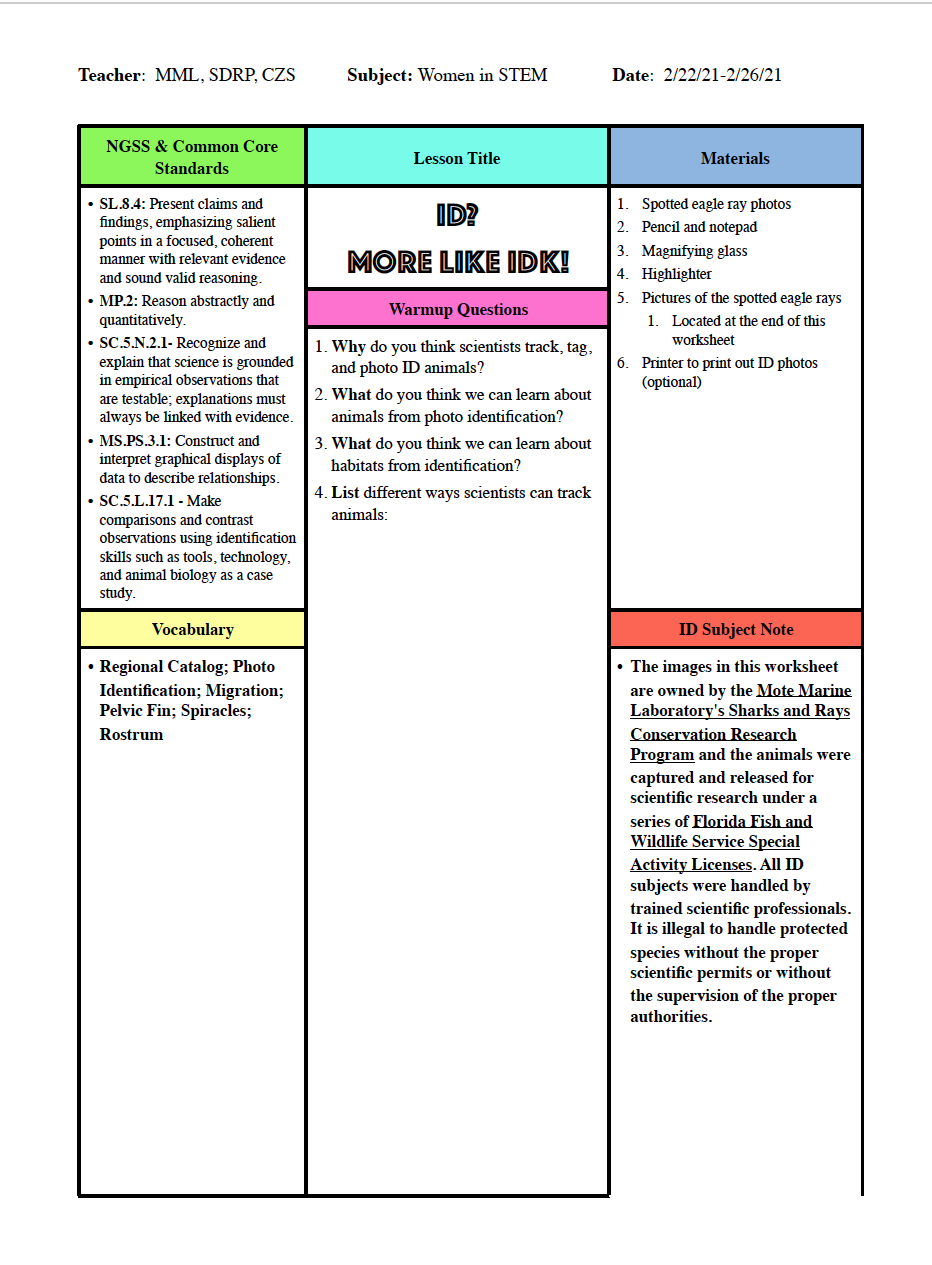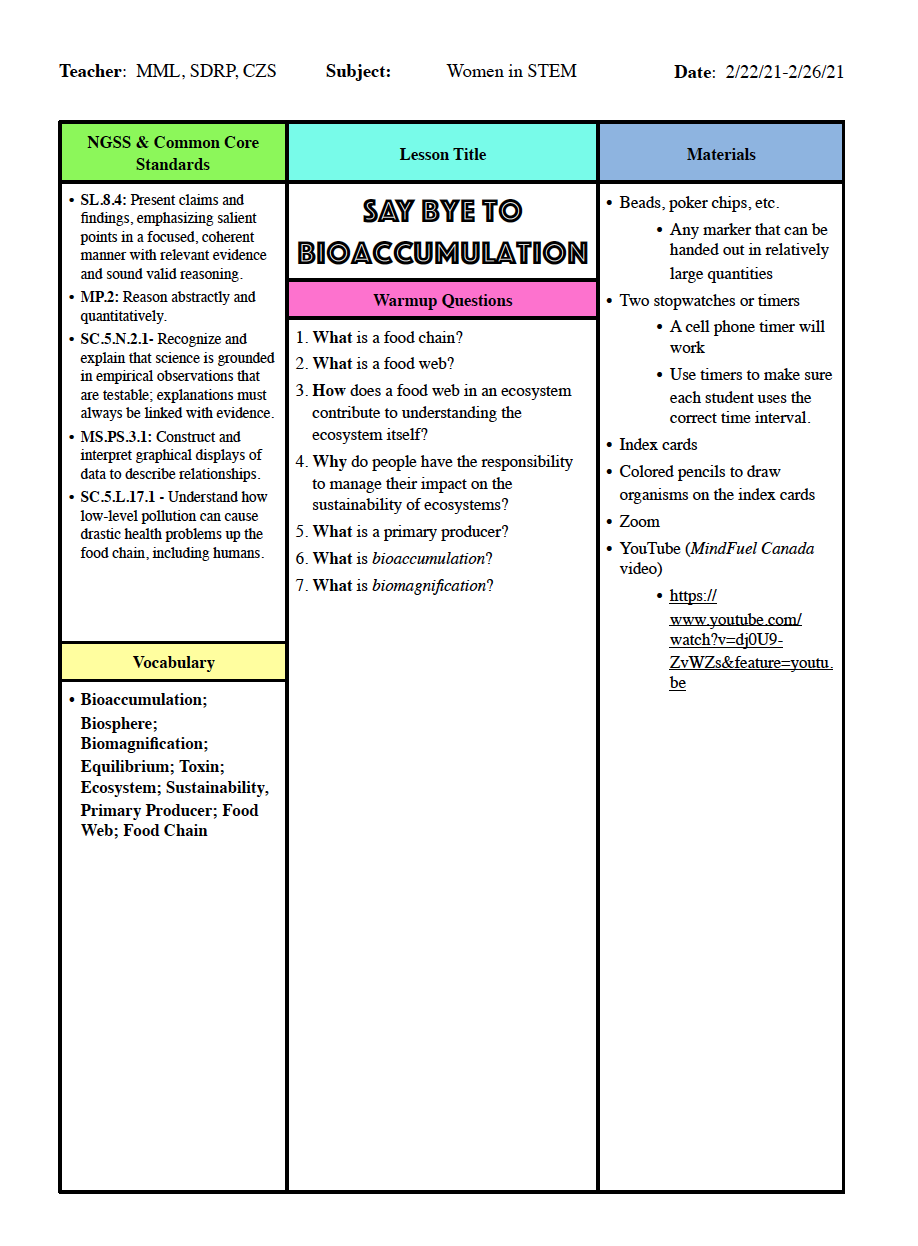Dolphin Conservation for Students
Sarasota Dolphin Conservation Lessons
“Sarasota Dolphin Conservation Lessons” were developed by educator Chip Phillips for elementary age students going to school in Sarasota County, Florida — the home base for the Sarasota Dolphin Research Program. However, they can easily be adapted for students in other locations. The lessons were designed to help teach the concept of conservation using the teaching guide (to the right) and supplemental videos (below).
Special thanks to the Disney Wildlife Conservation Fund for supporting the development of these lessons.
Download the lesson plans.
Conservation Lessons: Part 1
Conservation Lessons: Part 2
Marine Science for Students — Recommended for Grades 5-9
WinS — Women in STEM Series
This five-episode STEM series features amazing women researchers working in marine science. Each recording includes science demonstrations and bonus activities that reinforce concepts covered during the programs. Recommended for students in grades 5–9. Host presenters are Dr. Krystan Wilkinson, Postdoctoral Scientist with Chicago Zoological Society’s Sarasota Dolphin Research Program, and Ross Johnston, Virtual Learning Education Specialist with Mote Marine Laboratory.
Special thanks to Mote Scientific Foundation for supporting the development of the WinS series.
Animals Are Picky Eaters Too?
In this program, Ross doesn’t want to eat healthy and Krystan needs some strategies to help teach him the importance of a balanced diet. Krystan brings in Dr. Lisa Hoopes, a nutritionist with Georgia Aquarium, to teach Ross that animals can also be picky eaters and what she does to balance the animals’ diets.
Download the supplemental activity sheet.
In Danger of Becoming Endangered
In this program, Ross’ favorite park is going to be bulldozed and he’s upset he’s going to lose his favorite hangout spot. Krystan then compares that to habitat loss and brings in biologist Jasmin Graham from Mote Marine Laboratory to explain that animals become endangered when they no longer have a place to live.
Download the supplemental activity sheet.
ID? More Like IDK!
In this program, Ross is trying to identify different shore birds, but he is having a difficult time. He calls Krystan to see if she knows someone who can help. Krystan brings in a animal photo ID expert Ximena Arvizu with the Mexican Caribbean Eagle Ray Project to teach Ross tips and tricks for field biology and what it takes to identify animals in the wild.
Download the supplemental activity sheet.
Making Music with Marine Mammals
In this program, Ross is listening to whale calls as music and Krystan tells him that those calls are more than just music, but actually methods of communication. Ross doesn’t believe her, so she brings in Dr. Katie McHugh, an animal acoustic expert with Chicago Zoological Society’s Sarasota Dolphin Research Program, to teach how animals talk to each other and how biologists are using animal sounds to help conservation efforts.
Download the supplemental activity sheet.
Download mother-calf exchange PPTX (powerpoint) file.
Download whistle activity PPTX (powerpoint) file.
Say ‘Bye’ to Bioaccumulation
In this program, Ross dropped his favorite snack on the ground and ate it anyway. While Krystan is disgusted and tells him he shouldn’t do that, Ross doesn’t seem to take it seriously because it’s just one piece and a few germs won’t hurt. Krystan then compares this to bioaccumulation and brings in biologist Laura Garcia Barcia of Florida International University to explain that a few pollutants can quickly build into a large, toxic amount.
Download the supplemental activity sheet.












